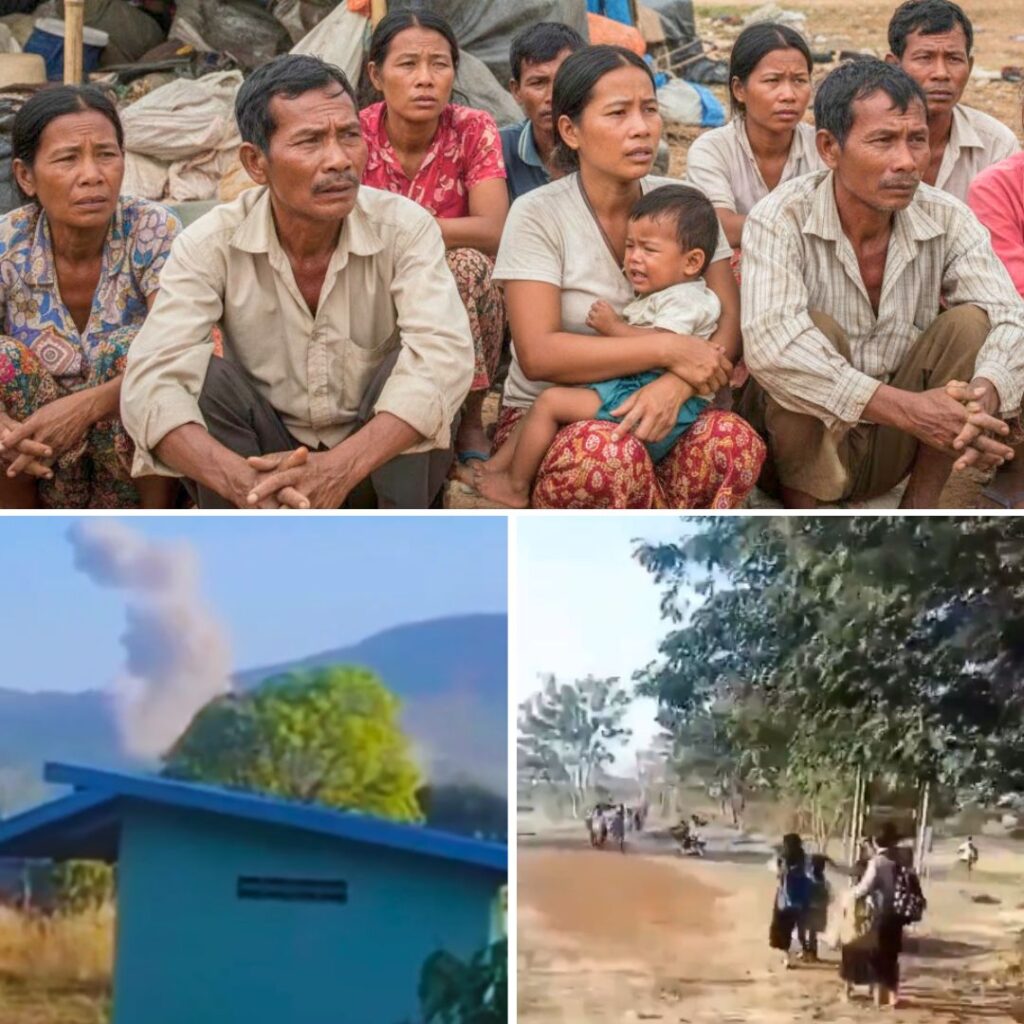Every year, visitors flock to the lush deciduous forests of Karnataka’s Bandipur and NagaraholeNational Parks, hoping to sight charismatic wildlife – the tigers, leopards and elephants that they harbour. The fringes of these forests, however, see a role reversal: wildlife visits people instead.
“Just look at it.” Parashivappa scoffs, pointing at elephant footprints embedded in the moist soil that holds his now ruined tomato harvest. “They visit daily, and we have tried to scare them away, but it never works.” The thought of a lone tiger or wild elephants visiting your backyard might never cross your mind, but they are common and unwanted visitors for Parashivappa. He has resigned to spending most of his nights with a flashlight on a machan (a temporary watchtower perched on a tree) that he built on the edge of his tomato field, trying to guard it against the wild animals.
A machan overlooking a field adjacent to Bandipur’s forests
Parashivappa’s village, Maduvinahalli borders the Bandipur Tiger Reserve of Karnataka. This nature reserve forms a crucial part of the mountain range that runs parallel to India’s western coast and is one of the 36 biodiversity hotspots of the world – the Western Ghats. Together with the Bandipur, Nagarahole, Wayanad and Sathyamangalam ranges, these forests are well-known globally for the staggering variety of endemic and endangered wildlife they harbour. They boast of the world’s highest conglomeration of Asian elephants and tigers, and several other vulnerable and endangered wildlife like leopards, sloth bear, gaur and dholes.
Image Courtesy: Kalyan Verma
With growing human populations overlapping with forests that are rich wildlife habitats, increasing interactions between people and animals are inevitable. Rural communities of India are known for traditionally being tolerant of wildlife, and accepting of the presence of animals as a part of their daily lives. However, this fragile state of affairs is quick to erode when people incur heavy and consistent losses of livelihood – including crops, property and livestock, or sometimes human life, due to wildlife.
A farmer tilling his farmland.
Continued Parashivappa, “Our farms are so close to the forests. Of course, we know elephants will occasionally come, but it is very difficult to consistently lose our hard-earned harvest.” Parashivappa has been farming on this land for 25 years and initially, his crop of tomatoes would yield 100-120 cartons of that he could sell for a decent price. However, he feels that the frequency with which elephants venture out of the forests has rapidly increased over the past 10 years, due to which he is only able to harvest 30-40 cartons now. “It is tough to sustain my livelihood due to this consistent problem. I have had to give up harvesting banana and sugarcane.”
Mainstream media coverage of human and wildlife interactions tends to lean towards sensationalism, painting fierce conflict or violent loss of human life as an inevitable and frequent conclusion of living around animals. Such reportage often ends moulding the public’s perception of human and wildlife interactions with a dangerous bias against wildlife – especially predators – as blood-thirsty animals on the prowl, rather than reflecting on their inherently shy nature and tendency to avoid humans as much as possible. A consequence of this unfortunate trend is that the complexity of people’s relationships with wildlife, and the underlying nuances of the factors affecting human and wildlife interactions remain unheard.
“Our village is surrounded by the forest on three sides” narrated another farmer, Swamy, pointing towards the hills of Bandipur that border his village, Kundakere. “My father farmed here before me, and I continue the same work. We have had problems with wildlife for as long as I remember,” he continues, monotonously. Notorious in his village for his eccentricities, Swamy once locked up forest guards in their office. The reason? Having lost crop worth Rs 70,000 and frustrated at not having received a response, he saw no other way of capturing the forest department’s attention. Swamy’s concerns are not unique. There are sufficient funds in the governmental systems for providing loss compensation, but most of these do not reach the intended beneficiaries.
Compensation conundrums
The Indian government has provisions and procedures in place for compensating individuals for losses incurred due to protected wildlife, and they vary across states. Yet, farmers report a general dissatisfaction with the process, saying that they found it time consuming and inefficient, and ironically, very costly.
Damaged crop We spoke with Muddappa, a farmer residing in the village of Hadanur bordering Bandipur, which sees a very high level of human and wildlife conflict. An ageing tiger had killed a resident of this village a few years back, leading to a violent backlash…













